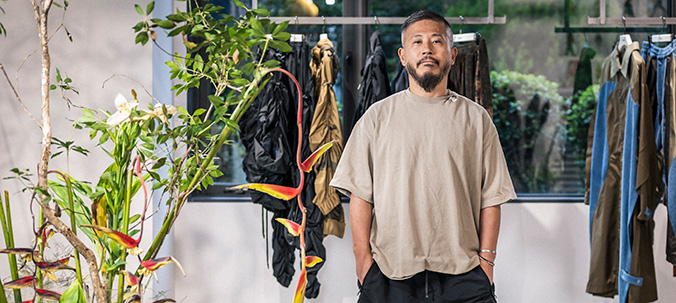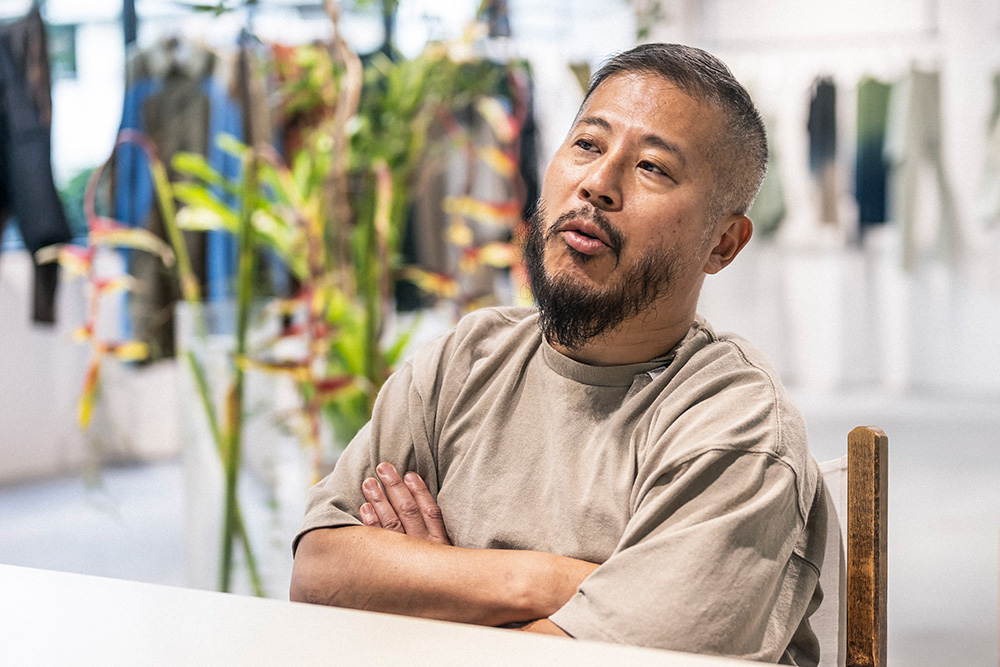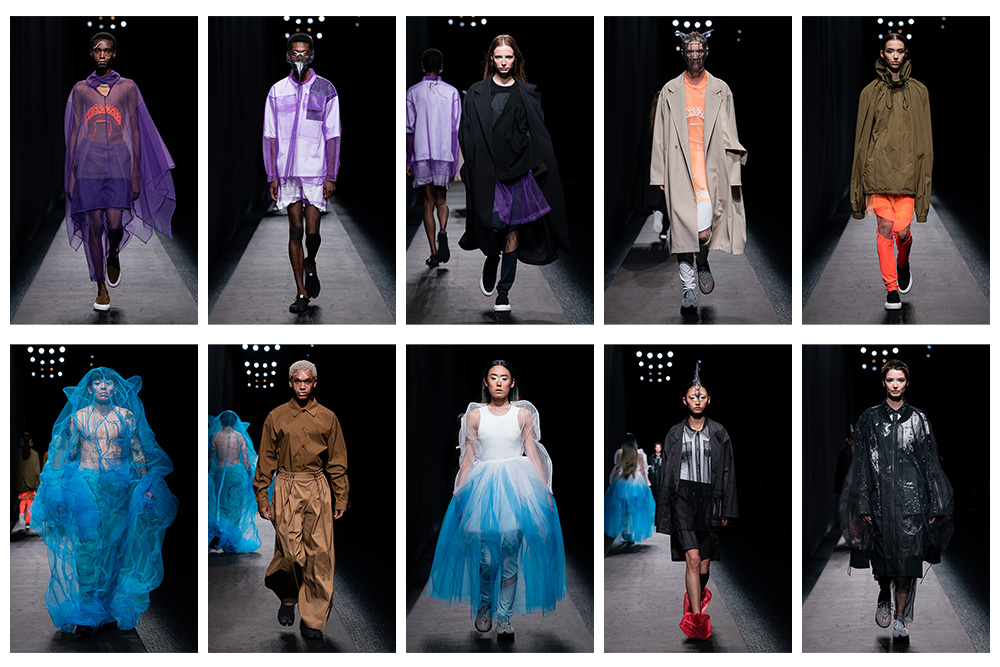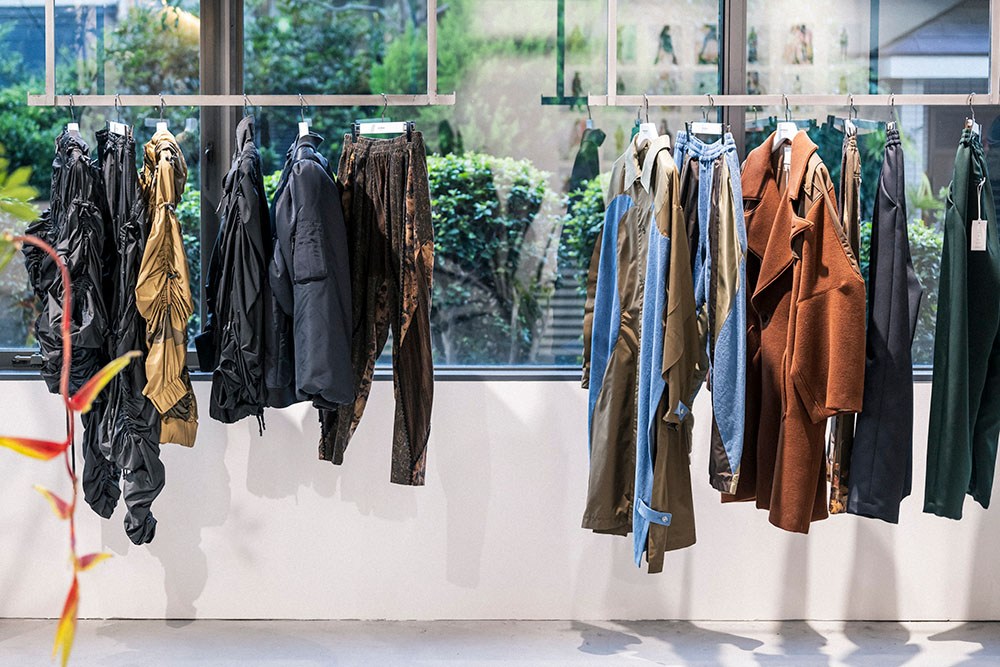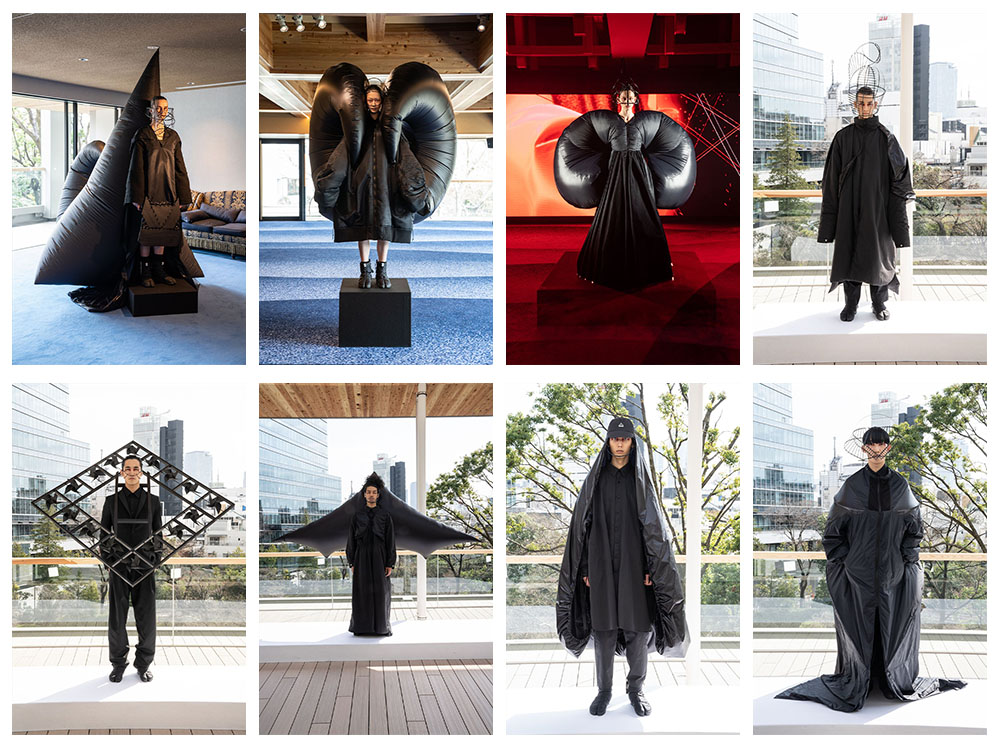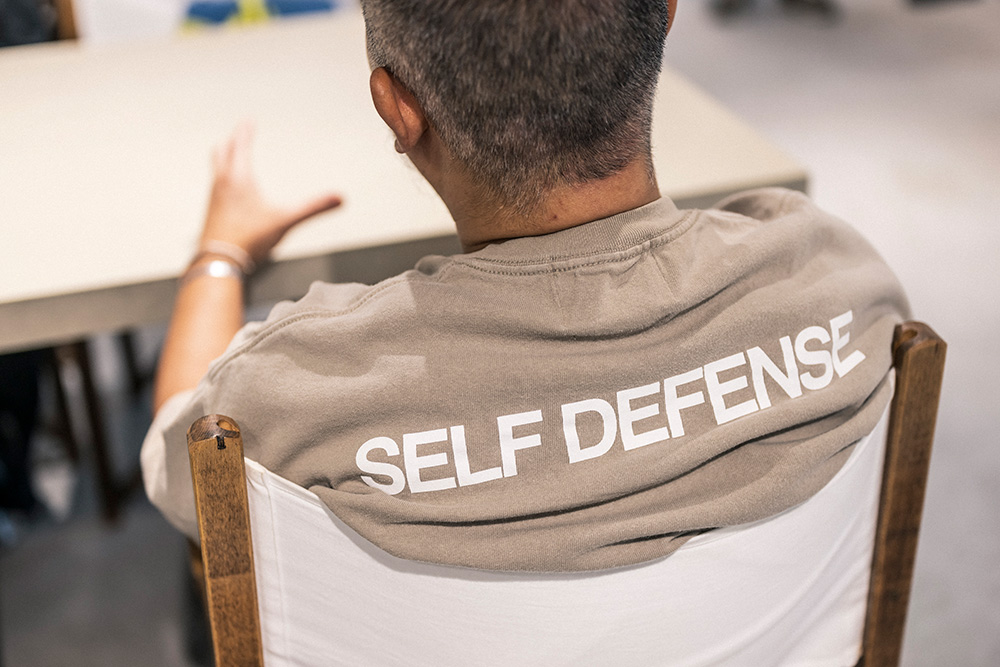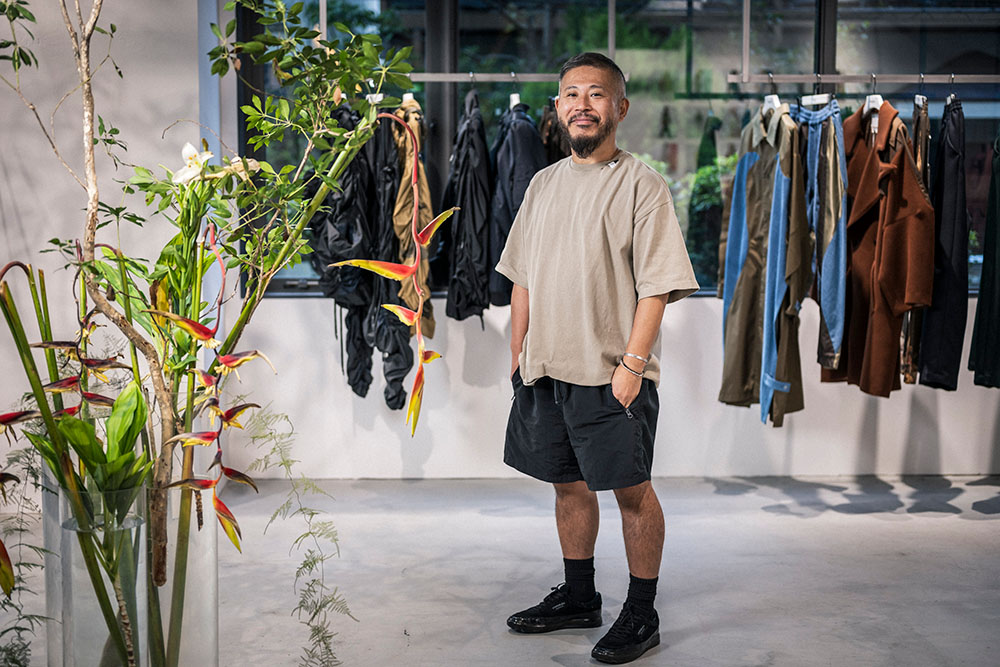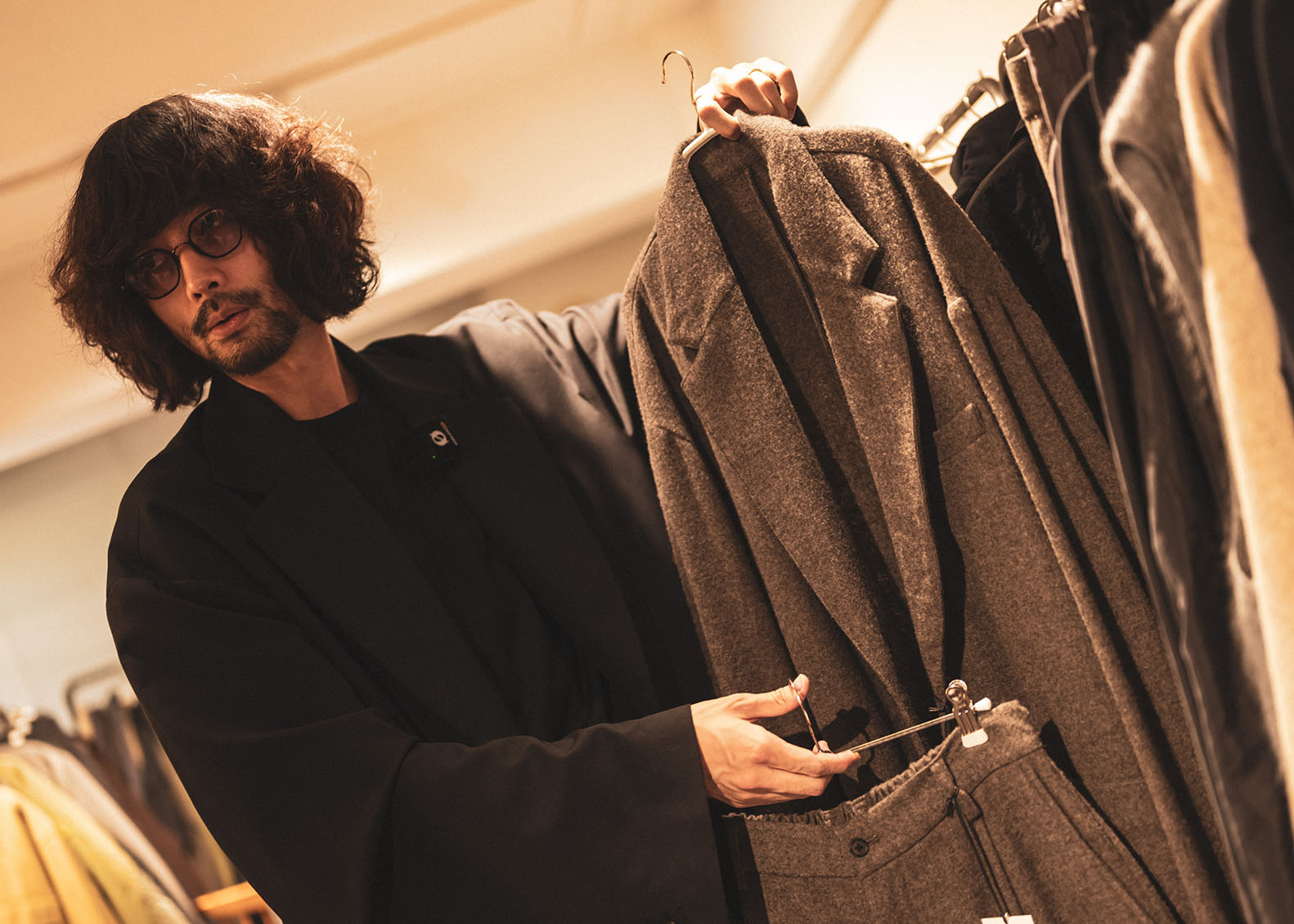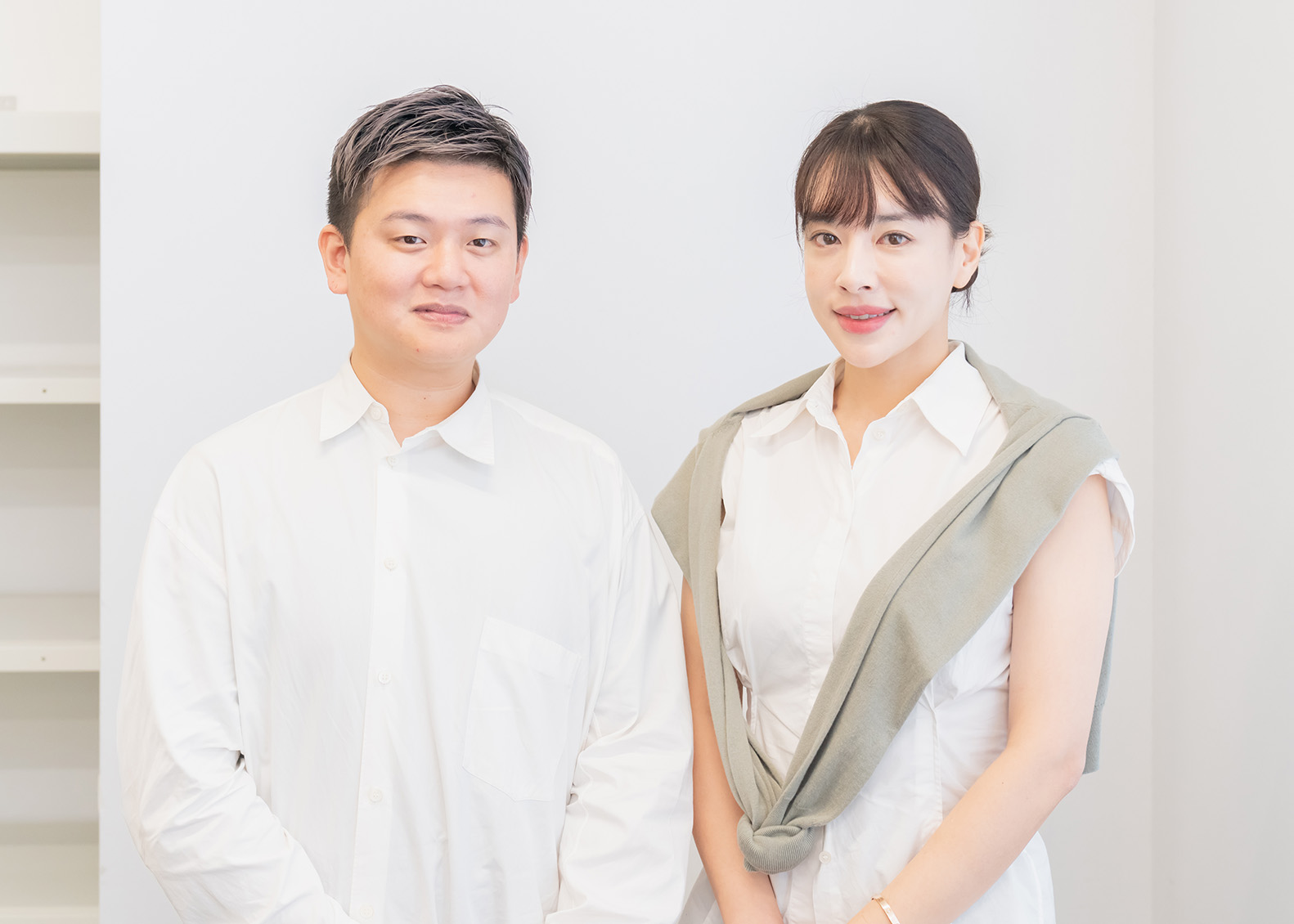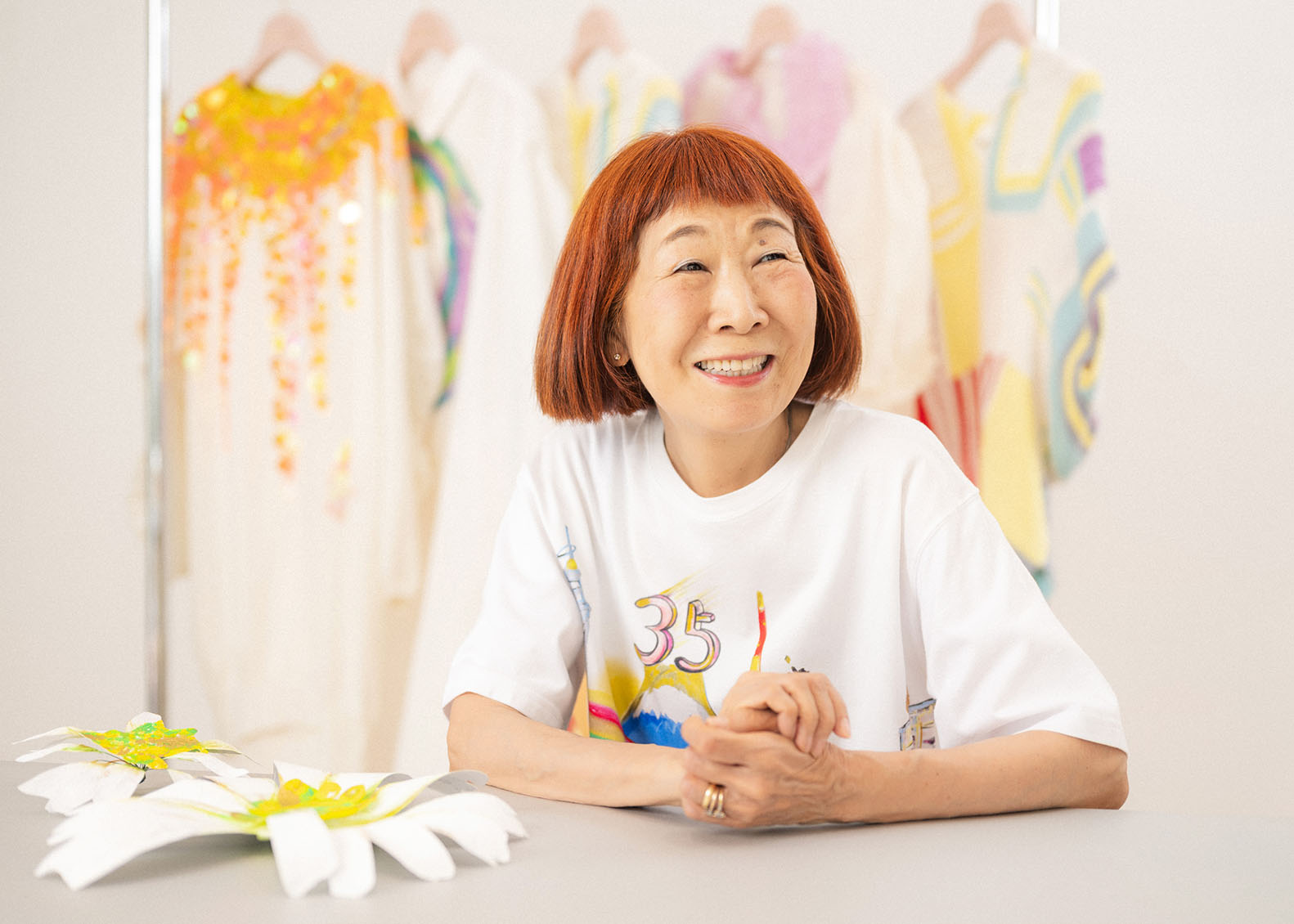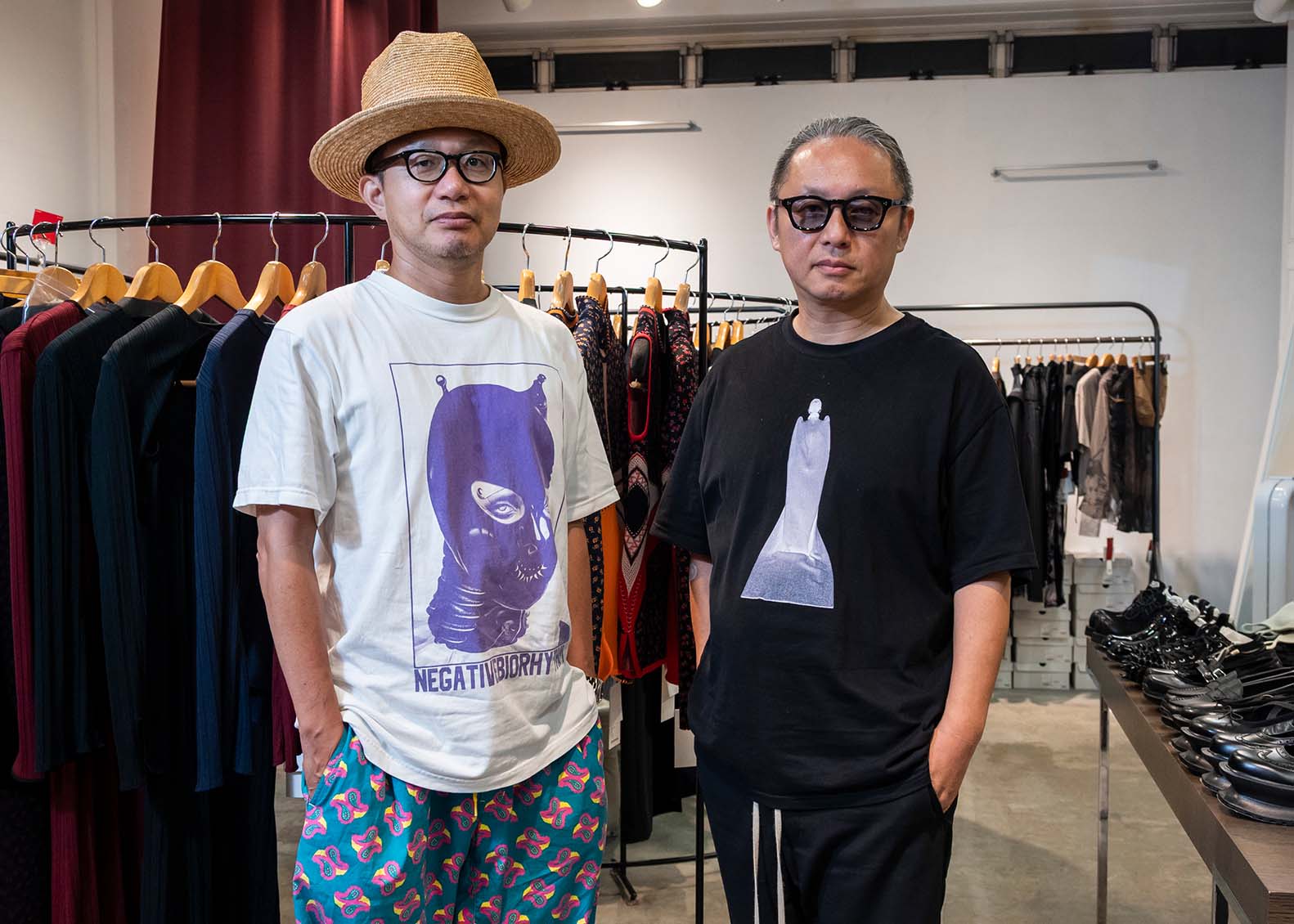Yoshio Kubo
yoshiokubo will return to Rakuten Fashion Week TOKYO for the upcoming 25S/S season after a two-year hiatus. On September 4, 2024, the brand will unveil a collection that encapsulates its creative journey over the past 20 years, a fitting way to commemorate this milestone anniversary. Anticipation is high for what promises to be yet another show brimming with the brand’s signature flair. We spoke with Yoshio Kubo, who continues to lead and innovate the brand, about his thoughts on the upcoming show and tips on enjoying Fashion Week like a designer.
After presenting shows at byR for the 2022 A/W and 2023 S/S seasons, you are returning to Rakuten Fashion Week TOKYO for the first time in two years. Can you share your thoughts on the upcoming show?
I’ve always believed that putting on a show is an art form—I turned fifty this July, and this belief continues to guide me. Over the years, I’ve shown in many different venues, including in Paris, but this time I’m hoping to do something quite unique. This year is particularly special as it marks the brand’s 20th anniversary, and I want to surprise people with the fact that a presentation like this is even possible. Runway shows certainly have their traditions, but if an alien were to look in from outer space, they might get the impression that human beings are a bit stuck in their ways. I’m planning a very exciting show, one that is only possible because of my experience trying many things over the last 20 years, so I hope you will look forward to it.
I can’t wait to see what you have in store for us on September 4! How do you feel at this moment, 20 years since starting your brand?
20 years have passed, yet my love for clothing, which has driven this brand, remains unwavering. Each time I design a new collection, I feel excited about what I want to create next. Now, after pushing myself in many different ways, my desire to create something transcendent has grown stronger. I’m striving to create something so awe-inspiringly intricate that it will make the hairs on your arm stand on end.
What is your concept for the 2025 S/S collection?
I’ve created this collection as a culmination of all the clothing I’ve made until now, centered around the idea of shuhari, a concept that describes the three stages of mastery in traditional Japanese arts: shu (protect, obey), ha (break, deviate), and ri (leave, transcend). The collection is designed to interest viewers both from afar and up close. The clothes are a fusion of intricate details, and I feel that my approach to creating them is becoming more akin to architecture or furniture design. It’s challenging to convey through social media or images just how one-of-a-kind these clothes actually are. Their materials and patterns are all original, and I hope people will find themselves puzzling over how they were made.
What kind of significance does the runway show hold for you?
Japanese brands are different from French fashion houses, so we shouldn’t shy away from putting on entertaining shows that make full use of our ideas and social networks. Nowadays, with the way information overflows on social media, I think many people feel that runway shows are becoming monotonous. I want to shake up expectations about what a show can be.
Are there any Japanese brands you are excited about?
Although I haven’t had the chance to see their shows, I think DAIRIKU, M A S U , and mister it. . are vibrant brands with a lot of energy. They are effective at conveying what makes their clothing interesting through videos and photographs, and the M A S U team is particularly talented in terms of its approach to selling and creating a community. I haven’t been able to attend the event in person for some time, but I stay up to date each season by watching video coverage of Fashion Week.
What is your personal approach to enjoying Fashion Week?
As a designer, I naturally find myself paying attention to details like the number of looks per model, but what I really enjoy is the anticipation just before a show begins, and being able to engage directly with the entertainment each brand brings. Each season, a brand creates a collection of around 30 looks, which translates to about 60 pieces, and if you include limited release drops too, that number can reach 100. It isn’t enough to make one good piece of clothing; a brand needs to consistently present its theme in a cohesive manner over time. I hope that the audience notices not just the thematic continuity but also how meticulously the brand has considered every detail of the show—the styling, sequence of looks, colors, music, timing—together as a team. We pour our hearts into the subtle, unspoken details, things like leaving the shoelaces untied on purpose, making sure the necktie hits the perfect length, and folding the cuffs just so.
With something like the Hakone Ekiden relay marathon, you become more invested in cheering the runners on if you’ve watched a program that introduces the runners’ pasts, and in the same way, I think that if there are more ways to engage with a designer’s biography, or texts and images in the lead-up to their collection, we will see more people really following brands. Seeing clothing created from a fresh, innovative angle can spark curiosity about the designer’s core vision, and that curiosity can potentially carry over into becoming a fan of the brand. Though I’ve experienced both failures and successes over the years, my love for clothing and my desire to keep designing stems from wanting to bring excitement to others. Every designer has something that drives them, and I’d love the chance to hear from them what those things are.
What are some things capturing your attention these days?
Saunas and the radio. I love saunas almost as much as I love creating new brands (laughs). I often walk to a sauna somewhere like Yokohama or Kawasaki, enjoy a session, drink a beer or whiskey highball, and then walk back home. While walking, I listen to the radio. The radio really expands my imagination. I’m always collecting information from different places to inspire my clothing designs, and right now, rakugo (a traditional form of Japanese comic storytelling) and the Yoshimoto radio program are big sources of inspiration. I’ve liked the radio since I was a child, and I also remember receiving a collection of rakugo tapes from my father. Many of my designs are deeply rooted in my personal history, and maybe that’s why I’ve been so drawn to the radio these days. I highly recommend Dorenijuu, which I love so much that I paid to be able to listen to all 75 episodes on a loop. It’s so good—I promise you’ll thank me!
What do you think is necessary to get more people interested in fashion?
Apparently, a lot of people don’t watch TV very much anymore, but I think it would be great to have more fashion content on TV. It’s crucial to have fashion programs like Fashion Tsushin, and I think it would be interesting to create spaces where people can talk about what makes a brand stand out. Something like asayan back in the day, a place where brands can compete head-to-head. Brands need to take pride in creating something truly unique to them. They can’t settle for being second best. Even if the clothes might seem simple, the process and context in which they were made need to be original. Rather than a world of low fashion literacy where everyone copies each other and thoughtless designs proliferate, it’s really important to create something unique, to go back and diligently study past designs to make sure no one else has ever made anything like it. Japanese people have a tendency to covet what others have, but it’s important for both creators and consumers to elevate their fashion literacy together.
What are your future aspirations as a designer?
I’d like to get more involved behind the scenes. I’ve started and supported many brands over the years, and now, I want to create designs that will stand the test of time. Meanwhile, I’d also like to create a space where young designers can come into their own. My hope is to create a platform where I can share my past experiences and struggles, leveraging my knowledge and network to provide support in a tangible way.
Interview by Tomoko Kawasaki
Photography by Daichi Saito
He had been working for New York haute couture designer “Robert Danes” as an assistant designer for 4 years in New York.
In April 2004, Yoshio Kubo came back to Japan to start his original label ”yoshio kubo”.
「yoshio kubo Spring / Summer 2009 collection」was first introduced in September, 2008 by the Tokyo Collection.
[ Website ] https://yoshiokubo.jp/
[ Instagram ] https://www.instagram.com/yoshiokubo_official/

